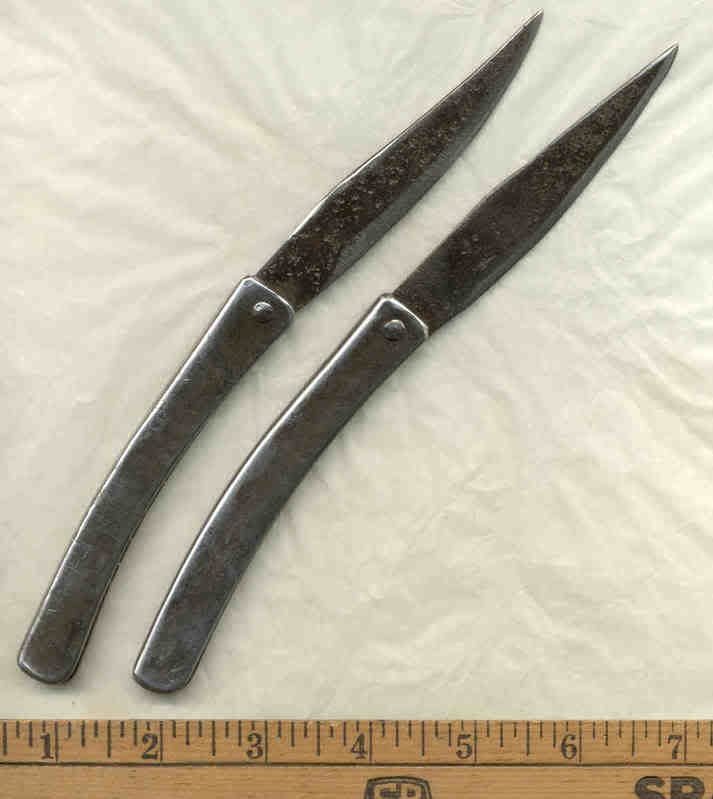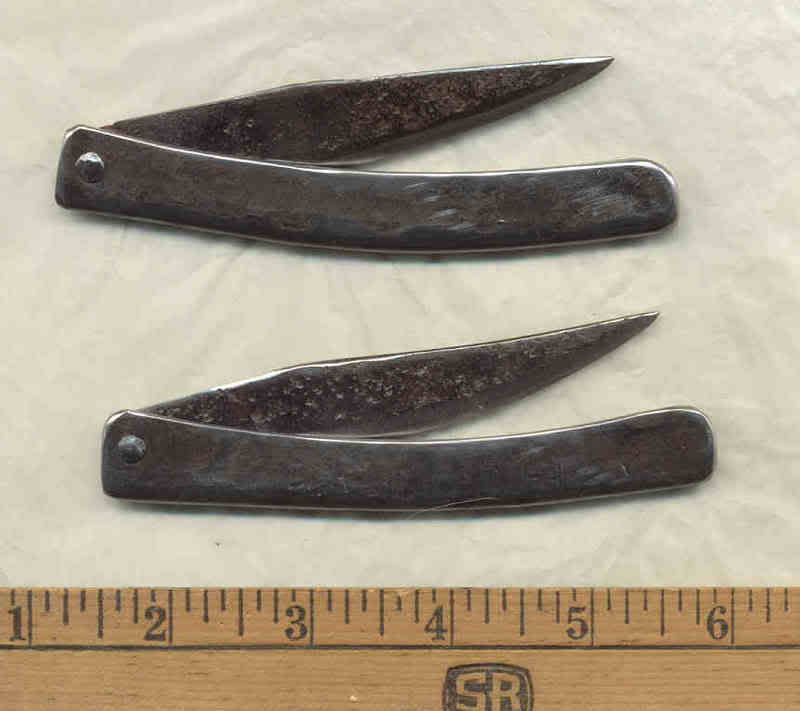I just had to get out and ... tinker ... in the shop this afternoon. (instead of heating up the forge to torture some poor innocent iron) :wink:
So I made a couple more of those iron-handled clasp knives based on originals recovered from la Salle's ship la Belle which sank off the Texas coast in 1685. I've been trying to find a second or third source of documentation for the, but not much luck so far. I've only found ... references ... to similar ones being called and used down south as "tobacco" knives (cutting pug). And a few more of those ... references ... to them being Sailor's Knives - but nothing specific enough just yet.


The blades were chiseled/ground out of a large crosscut saw blade. The handle is a piece of 16 or 18 guage that I hammered into that U shape.
The only problem making these is that I want to KEEP every one of them. They just feel so good in my hands. But one's already spoken for, and probably the other as well. Oh, well. I guess I'll just have to do some more ... tinkering.
Mikey - yee ol' grumpy German blacksmith out in the Hinterlands
So I made a couple more of those iron-handled clasp knives based on originals recovered from la Salle's ship la Belle which sank off the Texas coast in 1685. I've been trying to find a second or third source of documentation for the, but not much luck so far. I've only found ... references ... to similar ones being called and used down south as "tobacco" knives (cutting pug). And a few more of those ... references ... to them being Sailor's Knives - but nothing specific enough just yet.


The blades were chiseled/ground out of a large crosscut saw blade. The handle is a piece of 16 or 18 guage that I hammered into that U shape.
The only problem making these is that I want to KEEP every one of them. They just feel so good in my hands. But one's already spoken for, and probably the other as well. Oh, well. I guess I'll just have to do some more ... tinkering.
Mikey - yee ol' grumpy German blacksmith out in the Hinterlands




